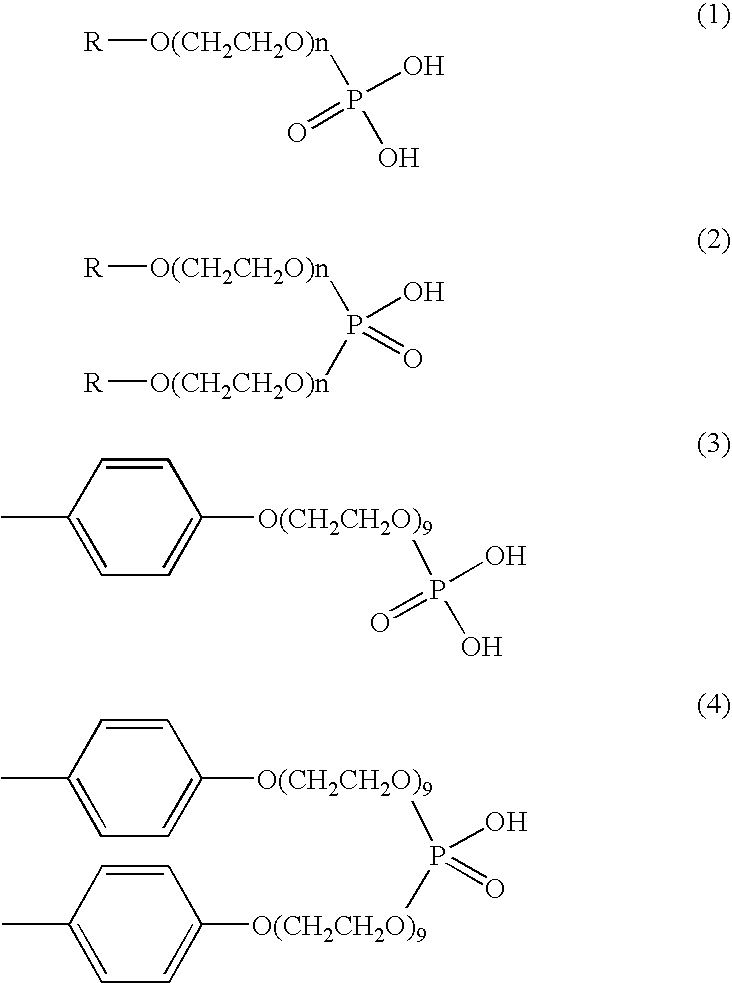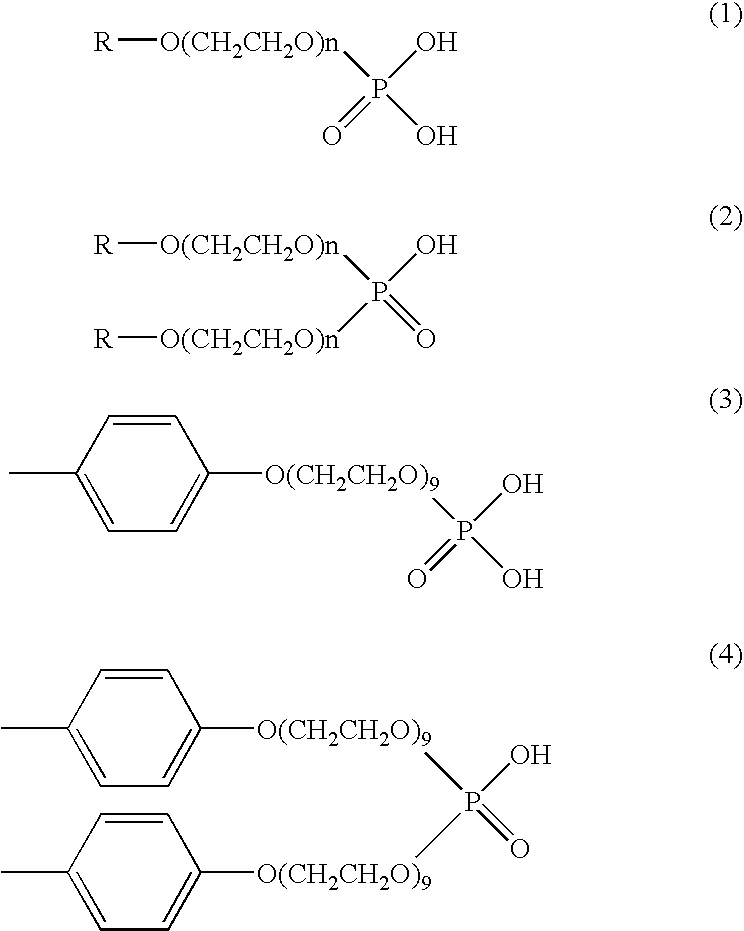Method for the termination of anionic polymerization using phosphate ester/water mixture
a technology of anionic polymerization and phosphate ester, which is applied in the field of anionic polymerization termination using phosphate ester/water mixture, can solve the problems of deteriorating transparency, unstable basic conditions of most antioxidants used for the above purpose, and inability to maintain stability
- Summary
- Abstract
- Description
- Claims
- Application Information
AI Technical Summary
Benefits of technology
Problems solved by technology
Method used
Image
Examples
example 2
[0042]The procedure of Example 1 was repeated, except that 0.5 part by weight of 25 wt % KPSS2000 / KPSS1000 / H2O (2:1:1, based on weight) mixture was added to the reactor as a polymerization terminator to terminate the polymerization. To the resultant polymer solution were added 0.4 part by weight of Songnox 1076 and 0.4 part by weight of Irgafos 168 as an antioxidant. Rubber crumb was obtained and a sample for thermal aging test was prepared. The color and the degree of thermal aging of the sample are given in Table 3. The coupling ratios and the colors of the polymer solutions after the further addition of styrene upon termination of the polymerization are given in Table 2.
example 3
[0043]The procedure of Example 1 was repeated, except that 0.6 part by weight of Songnox 1076 and 0.2 part by weight of 0.2 parts by weight of 2,4-bis[(octylthio)methyl]-o-cresol [Irganox 1520, Ciba Specialty Chemicals] as an antioxidant. Rubber crumb was obtained and a sample for thermal aging test was prepared. The color and the degree of thermal aging of the sample are given in Table 3. The coupling ratios and the colors of the polymer solutions after the further addition of styrene upon termination of the polymerization are given in Table 2.
example 4
[0044]The procedure of Example 1 was repeated, except that 0.5 part by weight of 25 wt % KPSS2000 / KPSS1000 / H2O (1:2:1, based on weight) mixture was added to the reactor as a polymerization terminator to terminate the polymerization. To the resultant polymer solution were added 0.6 part by weight of Songnox 1076 and 0.2 part by weight of 2,4-bis[(octylthio)methyl]-o-cresol [Irganox 1520, Ciba Specialty Chemicals] as an antioxidant. Rubber crumb was obtained and a sample for thermal aging test was prepared. The color and the degree of thermal aging of the sample are given in Table 3. The coupling ratios and the colors of the polymer solutions after the further addition of styrene upon termination of the polymerization are given in Table 2.
PUM
| Property | Measurement | Unit |
|---|---|---|
| Equivalent mass | aaaaa | aaaaa |
| Volume | aaaaa | aaaaa |
| Mass | aaaaa | aaaaa |
Abstract
Description
Claims
Application Information
 Login to View More
Login to View More - R&D
- Intellectual Property
- Life Sciences
- Materials
- Tech Scout
- Unparalleled Data Quality
- Higher Quality Content
- 60% Fewer Hallucinations
Browse by: Latest US Patents, China's latest patents, Technical Efficacy Thesaurus, Application Domain, Technology Topic, Popular Technical Reports.
© 2025 PatSnap. All rights reserved.Legal|Privacy policy|Modern Slavery Act Transparency Statement|Sitemap|About US| Contact US: help@patsnap.com


